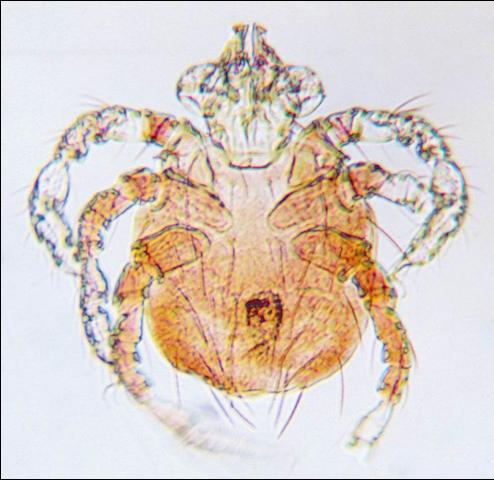How many blissful summer days have been disrupted in Florida by biting or stinging insects? More than a few. Mosquitoes, fire ants, yellow flies, dog flies, no-see-ums, yellowjackets, and more all live in our area and are either gleefully happy to violently defend their territory or actively seeking people out as food. One more creature to add to the list, though it is technically an arachnid rather than an insect, is the chigger.
Chiggers, also known colloquially as red bugs, are the larvae of mites in the family Trombiculidae. They are difficult to see, even as adults, because of their diminutive size. They’re tiny. So tiny, in fact, that you may not be able to feel them even if they’re crawling all over you. They don’t seem to have any claustrophobia, rather enjoying the tightest spaces under clothing and spots where skin is thin and tender. This leads to bites in some very uncomfortable places. When they bite, chiggers temporarily attach themselves to their host and inject a digestive fluid into the skin. This triggers an immune response in people; our bodies don’t seem to like being partially digested and sucked up by tiny critters. Even if the body’s response means the mite doesn’t finish its meal, it still leaves a mark. Different people may have varying sensitivity to the bites, but it is never a pleasant experience. Itching sets in four to eight hours after the bites, which may be accompanied by red welts or bumps on the skin. Severe reactions may lead to fever.

Chiggers do not attach themselves permanently to people, nor do they burrow under the skin. If you’re lucky enough to discover any mites still biting you, take a hot shower and lather with soap several times. Nail polish applied to the bites will not help, though strangely enough meat tenderizer may help with the itching. Antiseptic is always a good idea as well, and if you’re short on meat tenderizer, an over-the-counter anti-itch product will serve too.
To avoid running afoul of chiggers, be aware that they are most likely to be found in low, damp areas outdoors with shrubby vegetation. They may be found elsewhere, but one persistent myth is that they like to inhabit Spanish moss. In reality, they don’t have any particular attraction to it.
Thankfully, insect repellants that contain DEET repel chiggers as well as other pests. For maximum effectiveness on chiggers, apply repellants to sleeves and cuffs of pants, as well as waistlines.
For more information on these little crimson menaces, see our EDIS publication at https://edis.ifas.ufl.edu/publication/IG085 or contact your local Extension office.
- Quercus Geminata, the Sand Live Oak - November 20, 2025
- Snakes of the Panhandle - October 10, 2025
- Ganoderma, a Deadly Disease of Palms - September 4, 2025
